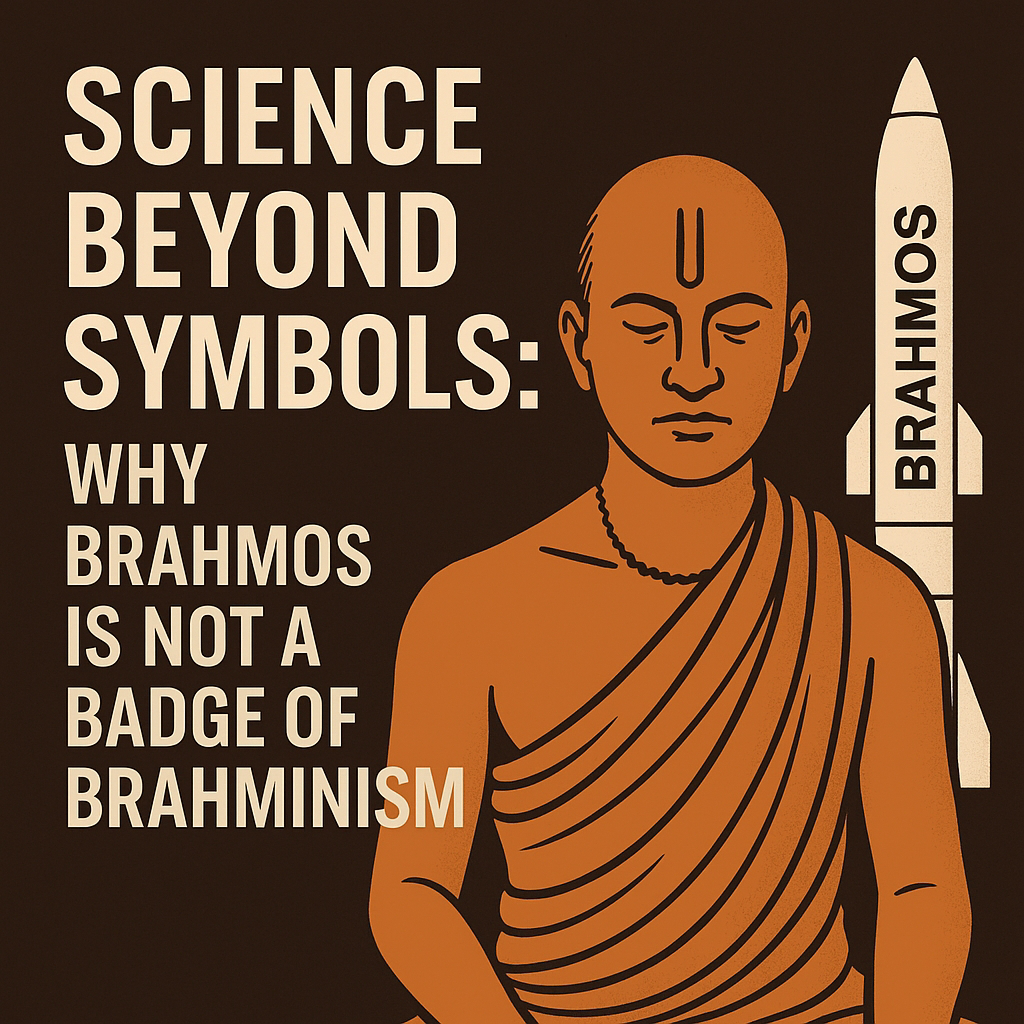Science Beyond Symbols: Why BrahMos Is Not a Badge of Brahminism
Introduction: The Viral Video and a Misleading Claim
A video recently went viral on social media (here, here and here also) showing a man dressed in dhoti, sporting a shikha, and engaging in religious discourse at a temple. The caption accompanying the video identified him as Dr. Jaytirth Joshi, the CEO and MD of BrahMos Aerospace, thereby suggesting a direct link between traditional Hindu practices and scientific leadership. This was forwarded many times on WhatsApp also. Check this sample screenshot.
This seemingly innocuous claim—on the surface, perhaps intended to celebrate India’s cultural diversity—raises serious concerns. It subtly promotes the idea that religious symbols, particularly those associated with Brahminism, are inherently linked to scientific excellence. While the authenticity of the man's identity remains unverified, the claim reveals an increasingly prevalent tendency to appropriate science in the service of religious or caste pride.
Science Is Not a Cultural Costume
The scientific enterprise is built on principles that are fundamentally different from those that govern religious rituals. Scientific knowledge is produced through observation, hypothesis, experimentation, and peer review. It is empirical, provisional, and secular by nature. Religious identity—be it expressed through shikha, tilak, dhoti, or temple debates—is a matter of personal faith and community tradition. These symbols may be deeply meaningful for individuals, but they are not prerequisites for engaging in or excelling at scientific research.
To connect science with Brahminical symbols or practices is to ignore the contributions of thousands of scientists from varied backgrounds—non-Brahmins, Dalits, Muslims, Christians, atheists, agnostics, and others—who have shaped India's scientific institutions.
The Truth About BrahMos
The very name BrahMos, often used as a point of pride and sometimes even misrepresented as a marker of Hindu heritage, has nothing to do with Brahminism or religious philosophy. It is a portmanteau of two rivers—Brahmaputra in India and Moskva in Russia. The missile is the result of a joint Indo-Russian venture, symbolizing strategic collaboration and technological prowess.
To suggest otherwise is not only factually incorrect but intellectually dishonest. It reduces a cutting-edge, high-precision scientific achievement to a cultural or religious symbol, erasing the labor of engineers, scientists, defense experts, and policymakers who made it possible—many of whom may never have set foot in a temple or worn a dhoti.
Merit, Not Mythology
Science has always thrived on merit, curiosity, and rational thinking—not on mythology, ritual, or caste-based identity. India's progress in space technology, nuclear research, information technology, and defense innovation owes itself to the democratization of science—where ability and inquiry matter more than ancestry or attire.
Historical figures like Dr. Homi Bhabha, Dr. A.P.J. Abdul Kalam, Dr. Meghnad Saha, and Dr. Gagandeep Kang stand as testament to the fact that India’s scientific landscape has been shaped by individuals from vastly different cultural and religious backgrounds.
The Real Danger of Such Narratives
While it is important to respect religious freedom and cultural expression, conflating these with scientific achievement can be dangerous. It risks fostering a narrow, exclusionary vision of science—one that elevates certain identities while invisibilizing others. Worse, it may discourage young minds from diverse backgrounds from aspiring to enter scientific fields, thinking they do not "fit the image" of a scientist.
Science should remain an open field where questions matter more than customs, and where evidence trumps faith—not the other way around.
Conclusion: Celebrating Science Inclusively
Let us not fall into the trap of cultural gatekeeping in the name of science. We should celebrate the diversity of India not by turning scientists into religious icons, but by upholding the values that make science universal—rationality, openness, collaboration, and integrity.
The man in the viral video, whether or not he is Dr. Jaytirth Joshi, has every right to express his faith. But let us not mistake personal religiosity for professional identity. And let us certainly not rewrite the story of BrahMos—or of Indian science—through the lens of caste or religious pride.
Science belongs to all. Let’s keep it that way.


No comments:
Post a Comment